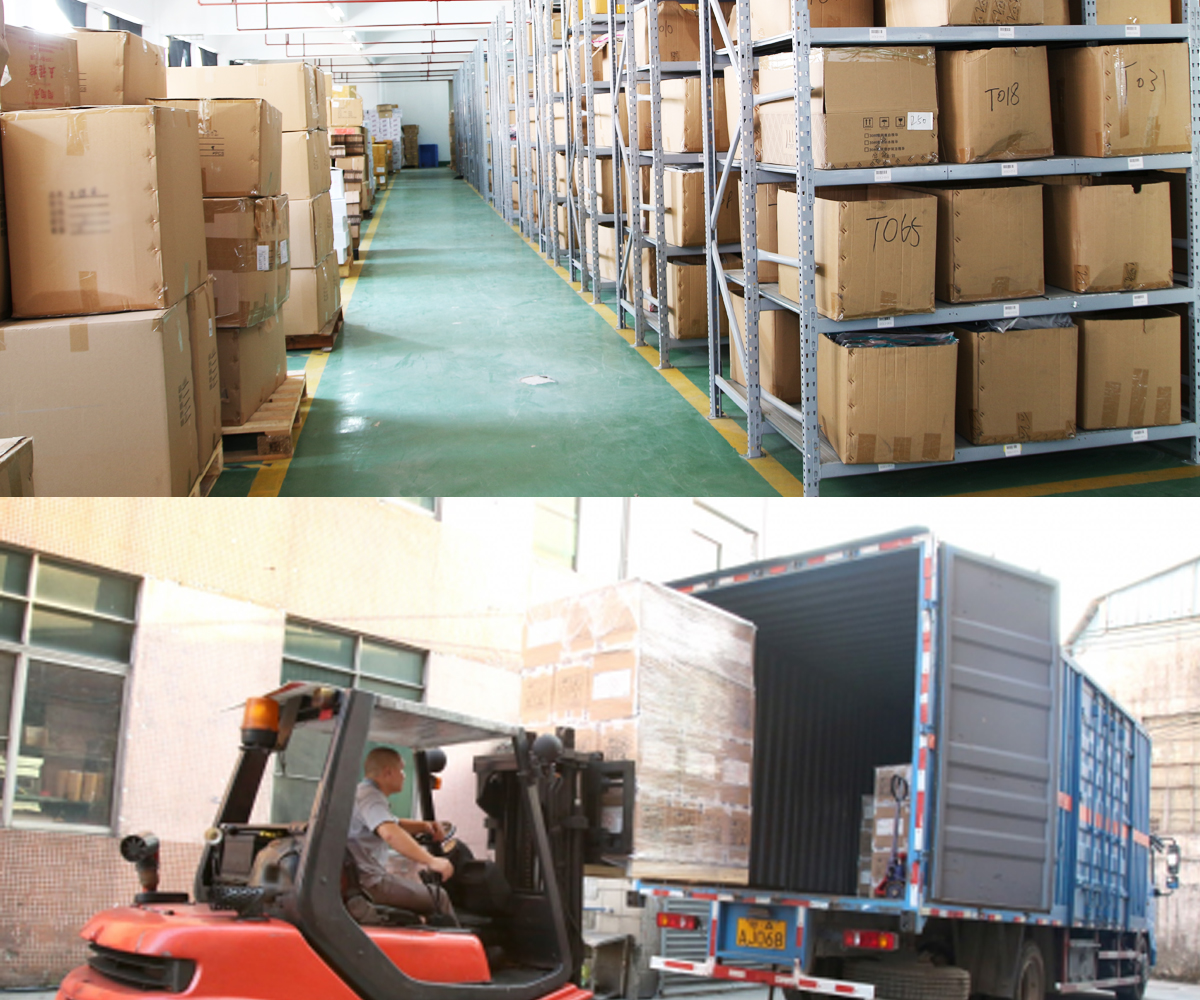The current situation of the packaging and printing industry and the most difficult challenges it faces
For packaging printing companies, digital printing technology, automation equipment and workflow tools are critical to increasing their productivity, reducing waste and reducing the need for skilled labor. While these trends were occurring before COVID-19, the pandemic has further highlighted their importance.chocolate truffle packaging factory
Supply chain
Packaging and printing companies have been greatly affected by the supply chain and prices, especially in terms of paper supply. In essence, the paper supply chain is very global, and companies in different countries and regions around the world basically need raw materials such as paper for production, coating and processing. Businesses around the world are dealing in different ways with labor and supplies of paper and other materials caused by the epidemic. As a packaging and printing company, one of the ways to deal with this crisis is to fully cooperate with dealers and predict material demand.
Many paper mills have reduced production capacity, resulting in a shortage of paper supply in the market and causing prices to rise. In addition, freight costs have generally increased, and this situation will not end in the short term. Coupled with delayed demand, logistics and rigid production processes, these have had a huge negative impact on paper supply. Perhaps the problem will increase over time. Problems gradually arise over time, but in the short term, this is a headache for packaging and printing companies, so packaging printers should stock up as soon as possible.chocolate truffle packaging factory
The supply chain disruption caused by the COVID-19 epidemic in 2020 will continue into 2021. The global epidemic continues to affect manufacturing, consumption, and logistics. Coupled with rising raw material costs and freight shortages, companies in many industries around the world are facing tremendous pressure. Although this situation will continue into 2022, some measures can be taken to mitigate the impact. For example, plan ahead as much as possible and communicate your needs to paper suppliers as early as possible. Flexibility in the size and variety of paper inventory is also very useful if the selected product is not available.chocolate truffle packaging factory
There is no doubt that we are in the midst of global market changes that will have repercussions for a long time to come. The immediate shortage and price uncertainty will continue for at least another year. Those businesses that are nimble enough to work with the right suppliers to weather difficult times will emerge stronger. As raw material supply chains continue to impact product prices and availability, it forces packaging printers to utilize a variety of paper types to meet customer printing deadlines. For example, some packaging printers use more super-glossy, uncoated papers.
In addition, many packaging and printing companies will conduct comprehensive research and judgment in different ways depending on their size and the markets they serve. Although some companies purchase more paper and maintain inventory, other companies use optimized paper usage processes to adjust The cost of producing an order for a customer. Many packaging and printing companies cannot control the supply chain and pricing. The real solution lies in creative solutions to improve efficiency.
From a software perspective, it is also important for packaging and printing companies to carefully evaluate their workflow and understand the time that can be optimized from the time a job enters the printing and digital production plant to final delivery. By reducing errors and manual processes, some packaging printing companies have even reduced costs by up to six figures. This is a sustained cost reduction that also opens the door to additional throughput and business growth opportunities.
Labor shortage
Another challenge faced by packaging printing suppliers is the lack of skilled workers. Currently, European and American countries are facing a widespread phenomenon of resignations, with many mid-career workers leaving their original workplaces to look for other development opportunities. Retaining these employees is important because they have the experience and knowledge needed to mentor and train new employees. It is good practice for packaging printing suppliers to provide incentives to ensure employees stay with the company.chocolate truffle packaging factory
What is clear is that attracting and retaining skilled workers has become one of the biggest challenges facing the packaging and printing industry. In fact, even before the pandemic, the printing industry was already undergoing a generational shift and struggling to find replacements for retiring skilled workers. Many young people do not want to spend a five-year apprenticeship learning how to operate a flexo press. Instead, young people are happy to use digital presses with which they are more familiar. Additionally, training will be easier and shorter. Under the current crisis, this trend will only accelerate.chocolate truffle packaging factory
Some packaging and printing companies retained their employees during the epidemic, while some were forced to lay off employees. Once production began to fully resume and packaging and printing companies began to recruit employees again, they found that there was a huge shortage of workers, and still is. This has prompted companies to continually look for ways to get work done with fewer people, including evaluating processes to figure out how to eliminate non-value-added tasks and investing in systems that facilitate automation. Digital printing solutions have a shorter learning curve, making it easier to train and onboard new operators, and businesses need to continue to bring new levels of automation and user interfaces that allow operators of all skills to increase their productivity and print quality.
Overall, digital printing presses provide an attractive environment for a young workforce. Traditional offset press systems are similar in that a computer control system with integrated artificial intelligence (AI) runs the press, allowing less experienced operators to achieve excellent results. Interestingly, using these new systems requires a new management model that instills methods and processes that leverage automation.chocolate truffle packaging factory
Hybrid inkjet solutions can be printed in-line with offset presses, adding variable data to the fixed print in one process, and then printing personalized boxes on separate inkjet or toner units. Web-to-printing and other automation technologies address worker shortages by increasing efficiency. However, it is one thing to discuss automation in the context of cost reduction. It becomes an existential problem in the market when there are hardly any workers available to receive and fulfill orders.
More and more companies are also focusing on software automation and devices to support workflows that require less human interaction. This is driving investment in new and upgraded hardware, software, and free workflows and will help businesses operate with better capabilities. Minimum staff to meet customer needs. The packaging and printing industry is experiencing labor shortages, coupled with the push for agile supply chains, the rise of e-commerce, and growth to unprecedented levels in the short term, there is no doubt that this will be a long-term trend.
Future trends
Expect more of the same in the coming time. Packaging and printing companies should continue to monitor industry trends, supply chains and invest in automation where possible. Leading suppliers to the packaging and printing industry are also paying attention to their customers' needs and continue to innovate to help support them. This innovation also extends beyond product solutions to include advances in business tools to help optimize production, as well as advances in predictive and remote service technology to help them maximize uptime.chocolate truffle packaging factory
External problems may still not be accurately predicted, so the only solution for packaging and printing companies is to optimize their internal processes. They will seek new sales channels and continue to improve customer service. Recent surveys indicate that more than 50% of packaging printers will invest in software in the coming months. The pandemic has taught packaging and printing companies to invest in leading-edge products such as hardware, inks, media, software that are technically sound, reliable and allow for multiple output applications as market changes may dictate volumes very quickly.
The drive for automation, shorter runs, less waste and full process control will dominate all areas of printing, including commercial printing, packaging, digital and traditional printing, security printing, currency printing and electronic product printing. It follows Industry 4.0 or the fourth industrial revolution, which combines the power of computers, digital data, artificial intelligence and electronic communications with the entire manufacturing industry. Incentives such as shrinking labor pools, competitive technologies, rising costs, shorter turnaround times, and the need for added value will not return.
Security and brand protection are an ongoing concern. Demand for anti-counterfeiting and other brand protection solutions is on the rise, which represents an excellent opportunity for the printing inks, substrates and software sectors. Digital printing solutions offer huge growth potential for governments, authorities, financial institutions and others that handle secure documents, as well as for brands that need to deal with counterfeiting issues, particularly in the nutraceutical, cosmetics and food and beverage industries.
In 2022, the sales volume of major equipment suppliers will continue to increase. As a member of the packaging and printing industry, we are working hard to make each process as efficient as possible, while striving to enable people in the production chain to make decisions, manage and satisfy Business development and customer experience requirements. The COVID-19 pandemic has brought real challenges to the packaging and printing industry. Tools such as e-commerce and automation have helped ease the burden for some, but issues such as supply chain shortages and access to skilled labor will remain for the foreseeable future. However, the packaging printing industry as a whole has remained remarkably resilient in the face of these challenges and has actually grown. It's clear that the best is yet to come.
Recent market trends in the printing and packaging industry
1. Surge in demand for paperboard functional and barrier coatings
Functional coatings, ideally those that do not compromise recyclability, are at the heart of the ongoing development of more sustainable fiber-based packaging. Several large paper companies have invested in equipping paper mills with high-throughput coatings, and demand for the new range of value-added products is expected to continue to grow across multiple industries.
Smithers expects the total value of the market to reach $8.56 billion in 2023, with nearly 3.37 million tons (metric tons) of coating materials consumed globally. Packaging coatings are also benefiting from increased R&D spending as demand strengthens across many sectors as new corporate and regulatory targets come into effect, expected as early as 2025
2. Aluminum foil will play an important role in the expansion of the packaging industry
Aluminum foil is a popular packaging material in the food and beverage, aviation, transportation, medical device and pharmaceutical industries. Due to its high ductility, it can be folded, shaped and easily rolled according to packaging needs. The inherent properties of aluminum foil allow it to be transformed into paper packaging, containers, tablet packaging, etc. It has high reflectivity and has applications in both decorative and functional areas. chocolate truffle packaging factory
According to reports, the use of aluminum foil around the world is growing at an annual rate of 4%. In 2018, global aluminum foil usage was approximately 50,000 tons, and is expected to exceed 2025 million tons in the next two years (that is, by 2025). China is the main user of aluminum foil, accounting for 46% of world usage.
Aluminum foil is rapidly gaining popularity in food and beverage packaging and is expected to play an important role in the expansion of the industry. It is often used to package dairy products, candy and coffee. It is the safest option for food packaging, but aluminum foil is not recommended for salty or acidic foods and aluminum tends to leach into foods with higher concentrations.
3. Easy-to-open packaging is gaining momentum
Ease of opening is often an overlooked aspect when it comes to packaging, but it can significantly impact the consumer experience. Traditionally, difficult-to-open packaging has been the norm, causing frustration for consumers and often requiring scissors or even help from others.
Companies like Mattel, maker of Barbie dolls and the Lego Group, are leading the way in adopting sustainable packaging practices. These changes include replacing plastic straps with more convenient alternatives such as elastic staples and paper ties. Companies like Mattel, maker of Barbie dolls and the Lego Group, are leading the way in adopting sustainable packaging practices. These changes include replacing plastic straps with more convenient alternatives such as elastic staples and paper ties.
The growing focus on sustainability and environmental awareness has led to the adoption of easy-to-open packaging that reduces material usage. Manufacturers are now taking on the challenge of revolutionizing the way products are unboxed by creating packaging that not only reduces environmental impact but also improves consumer convenience. chocolate truffle packaging factory
4. The digital printing ink market will further expand
According to Adroit Market Research, the digital printing ink market is expected to grow at a compound annual growth rate of 12.7% to US$3.33 billion by 2030. Digital printing inks generally have less negative impact on the environment than traditional printing inks. Digital printing requires minimal setup time and requires no plates or screens, reducing prepress waste. Additionally, digital printing inks now have better formulations, use less energy, and contain fewer volatile organic compounds (VOCs).
With the advancement of digital printing technology, the demand for digital printing inks is also increasing. Technological advancements have improved the capabilities and quality of digital printing technology. The efficiency of digital printing has increased due to advances in printhead technology, ink composition, color management and print resolution. Demand for digital printing inks has increased due to growing confidence in digital printing as a practical and high-quality printing option.
Post time: Nov-20-2023






.jpg)